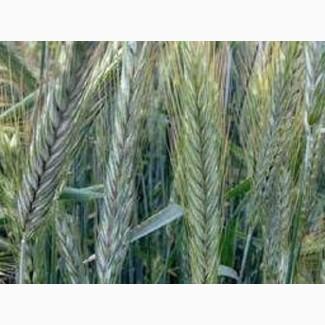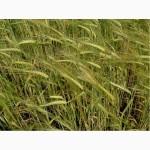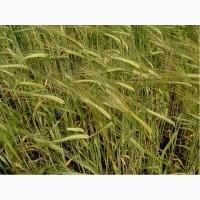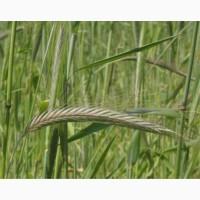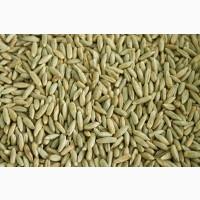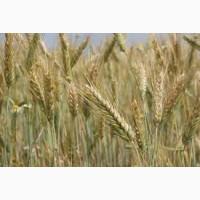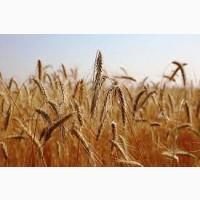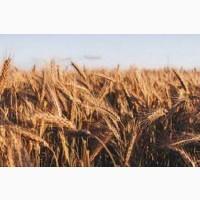For sale / buy
Seeds of winter rye (rye) Kobza, Kharkiv region.
Price10000 UAH. / ton
Region:all of Ukraine,
Kharkiv region.
Updated:
Grain assignment: Seed material
Quantity: 200 tons| ||147
Medium-ripe variety of winterrye Kobza. It was entered into the state register in 2010. Belongs to valuable varieties of universal purpose, which fully satisfies bakers and fattening farms.
The variety has a good bushiness, forms a bush of medium height with a medium-large spike.
Kobza stems, due to the small internodal space and thickened walls, have excellent resistance to lodging and brittleness. The grain of the variety is oval, of medium size with sparse hairs, has a light color and a pronounced groove. It holds firmly in the ear in the pre-harvest period and is not prone to germination in it.
The variety withstands climatic changes well, it is frost-resistant and drought-resistant. During the growing season, an excellent phytosanitary condition is preserved, thanks to high resistance against the main pathogenic diseases and harmful insects. Sowing of the variety is carried out in optimal terms, after good predecessors - perennial grasses, peas, corn and others.
Kobza is a high-yielding variety of winter rye.
The predecessor can be black, clean or occupied steam, row crops, flax, etc. As for feeding, phosphorus fertilizers stimulate the penetration of roots deep into the soil, and potassium fertilizers - the formation of thin branched roots, which contributes to better wintering of plants.
(//tractor-service.com)
Kobza is characterized by high bushiness. Considering the last sign, it is advisable to use low sowing rates: 2.5-3 million similar seeds per 1 ha. Thus, on 1 sq. m will form about 520-550 productive stems.
By the way, plants with dominant short stems have an interesting genetic feature: they are able to stay in the rosette stage for a long time, shading the soil surface from direct sunlight, and successfully suppress weeds. Short-stemmed rye is an excellent precursor for row crops. Another of its advantages is the simultaneous flowering of shoots of autumn and spring formation without reducing the number of grains in the ear, its fullness and size.
Since autumn, Kobza's winter rye does not grow, as it has a genetically increased tendency to bush. But in the spring, he needs to create optimal conditions for development, provide nutrients and moisture. If winter crops after wintering develop weakly and have a pale yellowish color, this means that the plants suffer from a lack of nitrogen. In fields where rye has developed well since the fall, but has weakened after overwintering, it is necessary to add nitrogen and phosphorus fertilizers to top dressing. In warm years with moderate humidity, the ripening period lasts longer, and in dry or, conversely, excessively humid weather - less. This is due to the grain sizegrains. Harvesting must be done on time, otherwise there will be losses due to rain.
The flour-milling and bread-making qualities of the novelty are excellent. In the competitive variety test, 9.82 tons per hectare were obtained.
The nutritional value of rye proteins is very high: compared to mother's milk - 83%, while wheat has only 41%.
In our Polissia and Forest Steppe, this crop exceeds winter wheat in terms of winter hardiness and resistance to adverse weather conditions. In the northern regions, rye yields 50-60% more thanwheat. Able to grow on soils of varying fertility, even on unproductive sandy soils.
In Ukraine, only winter rye is grown. The largest cultivated areas are in the Chernihiv, Zhytomyr, Sumy, and Kyiv regions, in the West. = /
The variety has a good bushiness, forms a bush of medium height with a medium-large spike.
Kobza stems, due to the small internodal space and thickened walls, have excellent resistance to lodging and brittleness. The grain of the variety is oval, of medium size with sparse hairs, has a light color and a pronounced groove. It holds firmly in the ear in the pre-harvest period and is not prone to germination in it.
The variety withstands climatic changes well, it is frost-resistant and drought-resistant. During the growing season, an excellent phytosanitary condition is preserved, thanks to high resistance against the main pathogenic diseases and harmful insects. Sowing of the variety is carried out in optimal terms, after good predecessors - perennial grasses, peas, corn and others.
Kobza is a high-yielding variety of winter rye.
The predecessor can be black, clean or occupied steam, row crops, flax, etc. As for feeding, phosphorus fertilizers stimulate the penetration of roots deep into the soil, and potassium fertilizers - the formation of thin branched roots, which contributes to better wintering of plants.
(//tractor-service.com)
Kobza is characterized by high bushiness. Considering the last sign, it is advisable to use low sowing rates: 2.5-3 million similar seeds per 1 ha. Thus, on 1 sq. m will form about 520-550 productive stems.
By the way, plants with dominant short stems have an interesting genetic feature: they are able to stay in the rosette stage for a long time, shading the soil surface from direct sunlight, and successfully suppress weeds. Short-stemmed rye is an excellent precursor for row crops. Another of its advantages is the simultaneous flowering of shoots of autumn and spring formation without reducing the number of grains in the ear, its fullness and size.
Since autumn, Kobza's winter rye does not grow, as it has a genetically increased tendency to bush. But in the spring, he needs to create optimal conditions for development, provide nutrients and moisture. If winter crops after wintering develop weakly and have a pale yellowish color, this means that the plants suffer from a lack of nitrogen. In fields where rye has developed well since the fall, but has weakened after overwintering, it is necessary to add nitrogen and phosphorus fertilizers to top dressing. In warm years with moderate humidity, the ripening period lasts longer, and in dry or, conversely, excessively humid weather - less. This is due to the grain sizegrains. Harvesting must be done on time, otherwise there will be losses due to rain.
The flour-milling and bread-making qualities of the novelty are excellent. In the competitive variety test, 9.82 tons per hectare were obtained.
The nutritional value of rye proteins is very high: compared to mother's milk - 83%, while wheat has only 41%.
In our Polissia and Forest Steppe, this crop exceeds winter wheat in terms of winter hardiness and resistance to adverse weather conditions. In the northern regions, rye yields 50-60% more thanwheat. Able to grow on soils of varying fertility, even on unproductive sandy soils.
In Ukraine, only winter rye is grown. The largest cultivated areas are in the Chernihiv, Zhytomyr, Sumy, and Kyiv regions, in the West. = /
|
Автор, контакты | |
ТОВ Хаском Трейд / отзывы, инфо. / activity evaluation | |
|
Phone:
+38(xxxxxx
показать
| |
| http://www.khaskom.com.ua | |
All user ads ~603 | |
Ad ID: #938339|| |238
(добавлено зарегистрированным пользователем, дата регистрации: 28-12-2016)
Added/Updated: 09-02-2024 07:07 (current, until: 02-09-2025)
Permanent ad address:
Showed / watched for today: ?, total: ?
